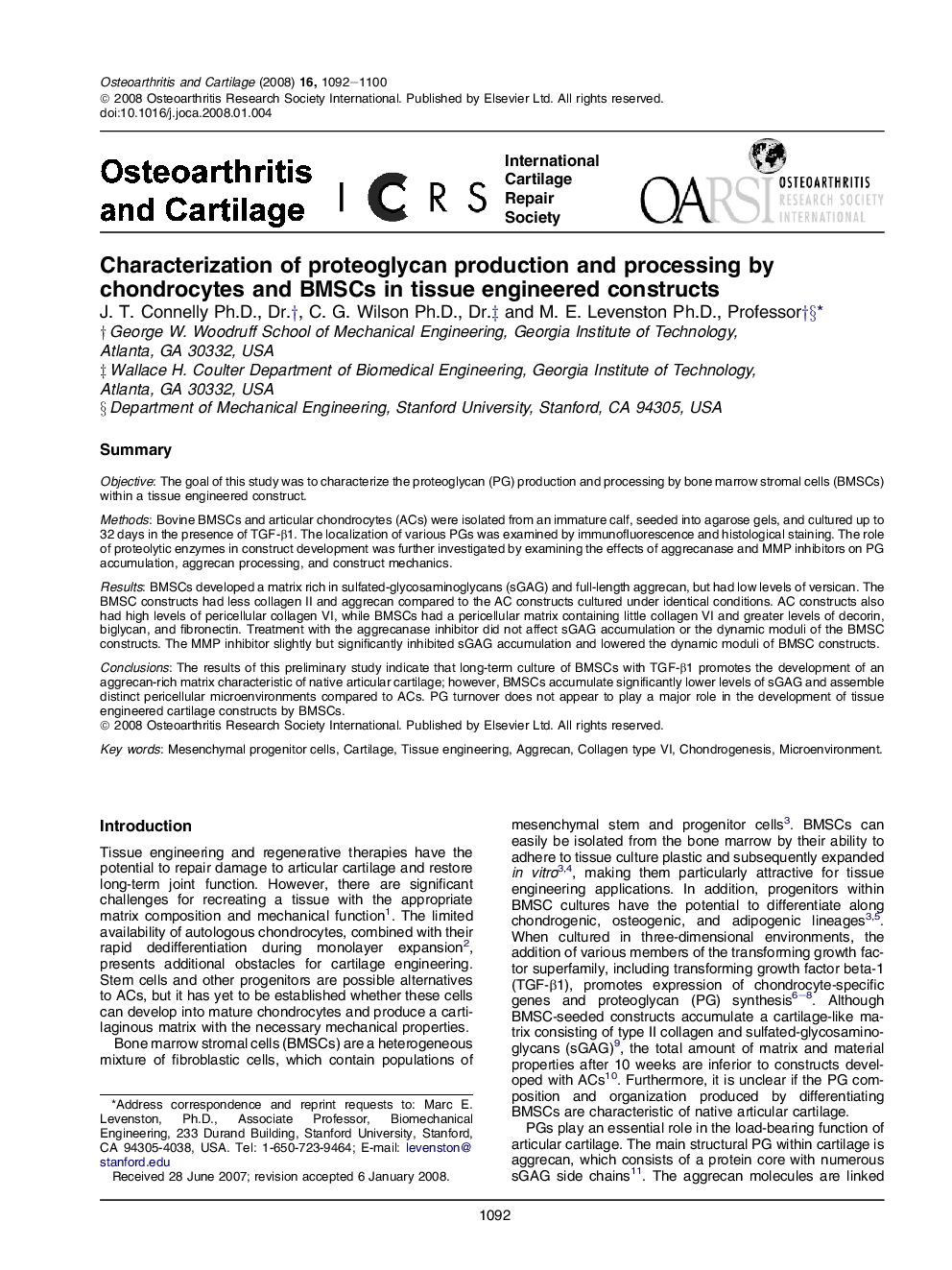| Article ID | Journal | Published Year | Pages | File Type |
|---|---|---|---|---|
| 3380987 | Osteoarthritis and Cartilage | 2008 | 9 Pages |
SummaryObjectiveThe goal of this study was to characterize the proteoglycan (PG) production and processing by bone marrow stromal cells (BMSCs) within a tissue engineered construct.MethodsBovine BMSCs and articular chondrocytes (ACs) were isolated from an immature calf, seeded into agarose gels, and cultured up to 32 days in the presence of TGF-β1. The localization of various PGs was examined by immunofluorescence and histological staining. The role of proteolytic enzymes in construct development was further investigated by examining the effects of aggrecanase and MMP inhibitors on PG accumulation, aggrecan processing, and construct mechanics.ResultsBMSCs developed a matrix rich in sulfated-glycosaminoglycans (sGAG) and full-length aggrecan, but had low levels of versican. The BMSC constructs had less collagen II and aggrecan compared to the AC constructs cultured under identical conditions. AC constructs also had high levels of pericellular collagen VI, while BMSCs had a pericellular matrix containing little collagen VI and greater levels of decorin, biglycan, and fibronectin. Treatment with the aggrecanase inhibitor did not affect sGAG accumulation or the dynamic moduli of the BMSC constructs. The MMP inhibitor slightly but significantly inhibited sGAG accumulation and lowered the dynamic moduli of BMSC constructs.ConclusionsThe results of this preliminary study indicate that long-term culture of BMSCs with TGF-β1 promotes the development of an aggrecan-rich matrix characteristic of native articular cartilage; however, BMSCs accumulate significantly lower levels of sGAG and assemble distinct pericellular microenvironments compared to ACs. PG turnover does not appear to play a major role in the development of tissue engineered cartilage constructs by BMSCs.
